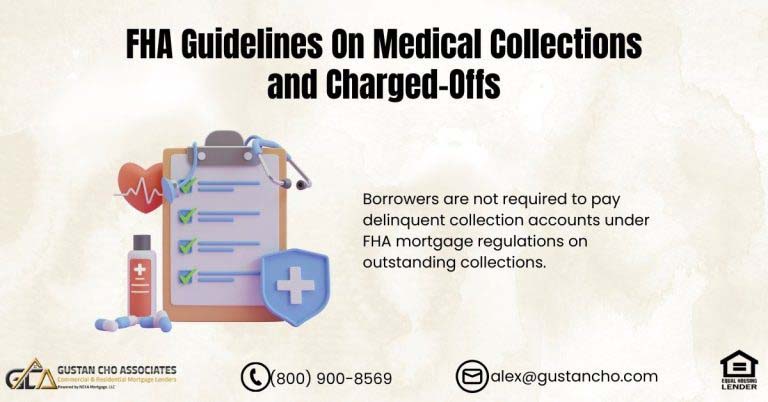This Article Is About FHA AUS Approval Versus Manual Underwriting On FHA Loans
HUD, the parent of the Federal Housing Administration (FHA) has recently changed its algorithms on the Automated Underwriting System (AUS) to make harder to get an approve/eligible per AUS on FHA Loans.
This only applies for borrowers with credit scores of under 640 FICO. What this means is it will be more difficult for borrowers with under 640 FICO to get an approve/eligible per automated underwriting system (AUS). Just because an FHA borrower cannot get an approve/eligible per AUS does not mean they will not qualify for an FHA Loan. A refer/eligible per automated underwriting system (AUS) means the AUS cannot render an automated approval per AUS. However, the file can get downgraded to an FHA Manual Underwrite.
A refer/eligible means that the automated system cannot determine the risk layers of the borrowers and a human mortgage underwriter needs to manually underwrite the loan.
Not all mortgage lenders can do manual underwriting. The good news is that Gustan Cho Associates are experts in manual underwriting. Over a third of our FHA and VA borrowers are manual underwrites. Compensating Factors are very important in manual underwriting.
In this blog, we will discuss FHA AUS Approval Versus Manual Underwriting on FHA Loans. The only difference between FHA AUS Approval Versus Manual Underwriting is the debt to income ratio requirements. We will delve further on the differences between FHA AUS Approval Versus Manual Underwriting in this blog.
Major Differences Between FHA AUS Approval Versus Manual Underwriting
The major difference between FHA AUS Approval and manual Underwriting is the cap on debt-to-income ratios. Borrowers can get an approve/eligible per AUS with a maximum front end DTI of 46.9% and back end DTI of 56.9%. However, there are tier level caps with FHA Manual Underwrites.
Here are the three tiers of debt to income ratio caps on manual underwriting on FHA Loans:
- Maximum of 31% front end DTI and maximum 43% DTI of the back end with no compensating factors.
- Maximum 37% DTI front end, and a maximum 47% back end DTI with one compensating factors.
- Maximum 40% front end DTI and 50% back end DTI with two compensating factors.
Compensating Factors are extremely important with manual underwriting. This holds especially true for borrowers with higher debt to income ratios. Compensating Factors are positive factors borrowers have.
FHA AUS Approval or Manual Underwriting? Let Us Help You Choose the Best Option for Your Loan!
Contact us today to learn how each option works and find the best path to your FHA loan approval.
How Long Does Manual Underwriting Take?
The duration of manual underwriting can vary from a few days to several weeks, depending on different factors. These factors encompass the intricacy of the borrower’s financial circumstances, the volume of work for the lender, the thoroughness and precision of the submitted documentation, and any possible complications that may emerge during the procedure.
Due to technological progress and enhanced procedures, certain lenders can accelerate manual underwriting in 2024, which could decrease the timeframe to a week or even less. Nevertheless, it is still typical for the procedure to require two to three weeks, particularly for intricate cases or peak periods.
Here are some steps to potentially speed up the process:
- Complete Documentation: Make sure all necessary documents are submitted precisely and thoroughly.
- Prompt Responses: Respond quickly to any requests for additional information or clarification.
- Clear Communication: Maintain clear and open communication with your lender to address any issues promptly.
- Pre-Preparation: Organize your financial documents in advance to avoid delays when the underwriter requests.
Importance Of Compensating Factors With FHA Manual Underwriting Files
Compensating Factors are extremely important with manual underwrites. This is more so with borrowers with higher debt to income ratios.
Lenders view the following as examples of compensating factors:
- Low payment shock of 5% or less and/or $100.
- 3 months of reserves of principal, interest, taxes, insurance (PITI) is considered compensating factors.
- Manual Underwriting files requires one month’s of reserves.
- Reserves cannot be gifted and need to be borrowers own funds.
- Part-time income and/or other income borrower has for at least the past 12 months but not used as qualifying income.
- A larger down payment shows skin in the game.
- History of being able to save money.
Manual Underwriting is similar to FHA AUS Approval underwriting. The biggest hurdle is the debt to income ratio requirements is lower on manual underwrites versus AUS underwrites. For more information on this topic and/or other mortgage-topics, please contact us at Gustan Cho Associates at 800-900-8569 or text us for faster response. Or email us at gcho@gustancho.com. We are available 7 days a week, evenings, weekends, and holidays.
FAQs: FHA AUS Approval Versus Manual Underwriting On FHA Loans
-
1. What changes has HUD made to the Automated Underwriting System (AUS) for FHA loans? HUD has updated the Automated Underwriting System (AUS) algorithms to make it more challenging for borrowers with credit scores under 640 FICO to get an approved/eligible decision.
-
2. What happens if a borrower with a credit score under 640 does not get an approved/eligible decision through AUS? A borrower must receive an approved/eligible decision via AUS to be eligible for an FHA loan. If this is not the case, the application may be sent for manual underwriting.
-
3. What is manual underwriting? Manual underwriting is a process in which a human mortgage underwriter reviews the loan application and makes a decision based on the borrower’s financial situation and compensating factors rather than relying solely on automated systems.
-
4. Can all mortgage lenders perform manual underwriting? No, not all mortgage lenders offer manual underwriting. However, Gustan Cho Associates specializes in manual underwriting and has extensive experience with it.
-
5. What are compensating factors, and why are they important in manual underwriting? Compensating factors are positive aspects of a borrower’s financial profile that can help offset higher debt-to-income ratios. They are crucial in manual underwriting to demonstrate the borrower’s ability to manage their mortgage payments.
-
6. What are the debt-to-income (DTI) ratio caps for FHA AUS approval? For FHA AUS approval, the maximum front-end DTI is 46.9%, and the maximum back-end DTI is 56.9%.
-
7. What are the debt-to-income (DTI) ratio caps for FHA manual underwriting? The debt-to-income (DTI) ratio caps for FHA manual underwriting are structured in tiers based on compensating factors. Without any compensating factors, the maximum allowed is a 31% front-end DTI and a 43% back-end DTI. With one compensating factor, these limits increase to a 37% front-end DTI and a 47% back-end DTI. Lastly, with two compensating factors, the maximum DTI ratios allowed are 40% for the front end and 50% for the back end.
-
8. What are some examples of compensating factors for FHA manual underwriting? Examples of compensating factors for FHA manual underwriting include low payment shock, having reserves for PITI, not relying on part-time income for qualifying, making a larger down payment, and demonstrating a history of saving money.
-
9. How long does manual underwriting take? Manual underwriting can take from a few days to several weeks, depending on the complexity of the borrower’s financial situation, the lender’s workload, the completeness and accuracy of documentation, and any potential issues during the process. Technological advancements may sometimes shorten this time to a week or less.
-
10. How can borrowers speed up the manual underwriting process? Borrowers should ensure they submit all necessary documents accurately and thoroughly to speed up the manual underwriting process. They should also respond promptly to any requests for additional information or clarification and maintain clear and open communication with the lender. Organizing financial documents in advance can also help avoid delays.
For more information or assistance with FHA loans, contact Gustan Cho Associates at 800-900-8569, text for a faster response, or email gcho@gustancho.com. They are available 7 days a week, including evenings, weekends, and holidays.
FHA AUS Approval or Manual Underwriting? Understand the Differences and Get Approved Faster!
Contact us today to learn about the differences between FHA AUS approval and manual underwriting and how we can help you get approved for your FHA loan.










